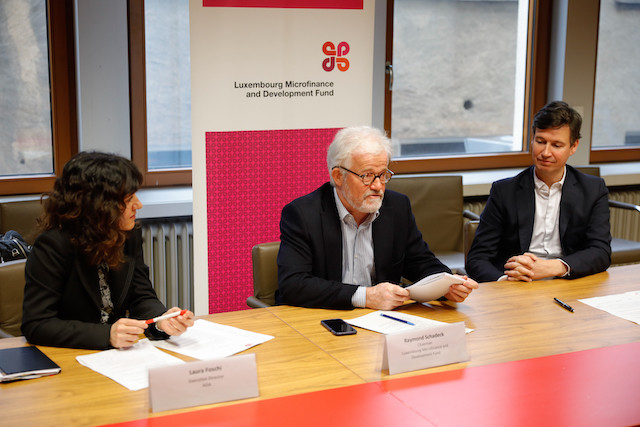During a Thursday press conference, LMDF executive director Kaspar Wansleben called the fund an “unusual” one—not only was it created through a public-private partnership (PPP) with the non-governmental association ADA, the finance and cooperation ministries and several banks, but it also surpassed its initial objectives. To date it has financed some 100 microfinance institutions across 35 countries, mainly in Latin America, but also in Africa, where it has recently been picking up speed, and in Southeast Asia. Over the last 10 years, some €74m in financing has been made available to over 234,000 micro-entrepreneurs, 79% of which are in low- and middle-income countries.
ADA executive director Laura Foschi added that around 80% of these entrepreneurs are women and not only do the projects yield high social impact, the credit “gives confidence to people”.
LMDF chairman Raymond Schadeck added that the Luxembourg structure through the PPP should be attractive for a private investor since it is “nearly no risk. The fund would need to lose more than 25% before it would even touch the private investor.”
He added that the annual return to private investors thus far has been between 1.2-1.5% and, in future, “we could easily increase the volume of the fund by 25-40%.”
The changing microfinance sector
The development track record of the LMDF to date includes a student loan product for family members of micro-entrepreneurs, including the financing over 1,100 students in Latin America.
But the fund has also provided financing in agriculture with an enhanced focus on value chains, for example helping farmers get fair access to markets and ensure quality produce, as well as asset financing. One success projects is M-Kopa, for example, which is a company financing solar powered electricity for households off the normal electricity grid.
In future, the plan is to broaden these areas further. “The microfinance sector is changing quite strongly and becoming more diverse,” Wansleben added. Given the short-term nature of microcredit loans, the financing link can seem like “a black box”. However, “What we are seeing and what we are very excited about is we are seeing increasingly models driven by digitalisation where these links become more obvious, more direct, and that’s something we as a fund would like to support very much.”
If all goes as planned the LMDF will hold a series of events during the month of May. It is anticipated that one of the guests will be from a Kenyan microfinance institution, to be confirmed via LMDF at a later stage.
